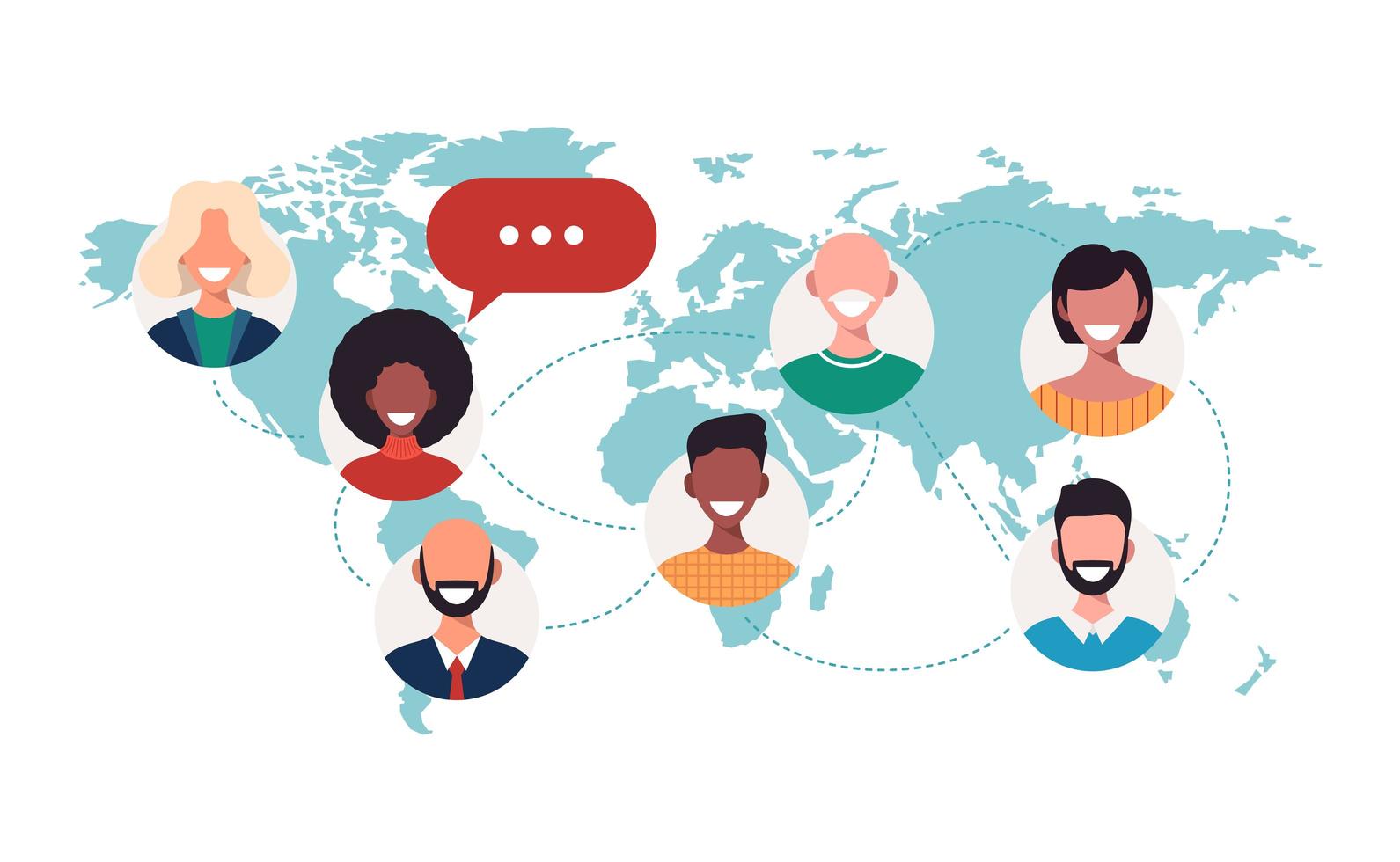If you’re under the age of 2020, you may have never sent a single SMS in your life. We do most of our global communication online through social media or email, but the Short Message Service has been around way longer than WiFi. Contrary to popular belief, SMS hasn’t become obsolete; we just use it for different things now.
Communication has come a long way in recent years. Driven by technological advancement, you can reach somebody anywhere in the world as long as they have a working phone. As we look to the future, the trajectory of SMS, MMS, and voice services promises to further revolutionize global communication.
Table of Contents
The Evolution of Global Communication & Messaging
The first thing you should understand is the difference between an SMS and an MMS. The former is a text-only standard launched in 1985 by the Global System for Mobile Communications. It was a revolutionary concept for the 1980s, despite the limitations we see in it today, and became the cornerstone of global communication for decades.
Like most things, SMS was transformed with the launch of the smartphone. We now have multimedia messaging (MMS) that lets you move beyond text-only messaging. You could send pictures, use emojis, and use other interactive features. In addition, we also figured out end-to-end encryption, which made messaging way safer than it was.
Everything in the 21st century can be described as a ‘technological explosion’. Messaging is no different. Compared to their simple ancestors, SMS and chat services today let you edit messages after sending them, share videos and links, integrate different apps into SMS, and use a litany of features most people don’t even know exist.
We may have shifted our daily communications online, but SMS services still play an important role in our digital footprint. SMS uses your mobile phone carrier, which is linked to your official identity. Since it’s much harder to create fake digital personas with things like two-factor authentication, all our online communication still relies on us having an SMS carrier.
AI-powered Chatbots and The Big Displacement
Social media messaging is free, and WiFi has become extremely accessible in the past couple of decades. As a result, the younger generations don’t use SMS for personal correspondence. In fact, we never would have imagined how much of our communication happens online now. From talking to friends to conducting business, customer service, and much more,
We already know SMS is relegated to emergencies, advertisements, and receiving authentication codes for online registrations. But since that wasn’t enough, we figured out how to automate an entire section of messaging. We realize social convention and human mannerisms waste too much time in a fast-paced capitalist economy. For some time, we made multi-million-dollar businesses out of dedicated call centers, trying to streamline mundane communication. But for better or worse, we automated that entire sector with AI.
Artificial intelligence is fully capable of answering customer service queries and holding semi-complex conversations over text. They can take over advertising campaigns and enhance user engagement by sending nearly instant responses. Businesses use AI-driven chatbots for customer support and save money on staff. On the other hand, customers can take advantage of smart assistants that conventional customer support representatives can’t compete with.

Voice Services and VOIP
We can’t hold WhatsApp and Instagram DMs solely responsible for the fall of SMS. The truth is, we’re moving on from our obsession with text-based global communication. Don’t get me wrong, the field is still evolving and far from dead. I’m only pointing out the explosion of voice-activated digital assistants. There are dozens of smart speakers on the market that incorporate AI assistants into their services. Alexa, Google Home, and SIRI are all hands-free, digital, voice-based communication systems that have transformed the way we interact with technology.
This leads us to VOIP or Voice over Internet Protocol. They allow verbal communication over the Internet, replacing traditional telephone networks. Think about your typical video conferencing tool—it relies on a voice. The calls are clearer, they cost much less, and you can make them from a plethora of devices, from computers to smartwatches. However, their biggest benefit is security.
Security in the Digital Age of Global Communication
The early days of the internet and global communication were littered with horror stories of scams and crimes. As our communication technology advances, hackers get even more sophisticated. This calls for an extremely robust security system, and we came up with end-to-end encryption. Our security nets are so advanced that governments and militaries in the 1990s had weaker encryption than a single WhatsApp message in 2023.
We’re developing blockchain technology, which is essentially unhackable, but we haven’t figured out a sustainable way to generate the gargantuan amounts of energy it requires. It’s no secret that every single move we make online is recorded and that the data is sold to companies for personalized marketing.
One day, you’ll be talking about a movie with your friend online, and the next day, you’ll get an SMS inviting you to the nearest theater. The short messaging service was where all virtual communication began, but now it’s just another outlet in the infinite online landscape.
For more similar blogs, visit EvolveDash today!
FAQs
- Why do some SMS messages fail to send?
SMS messages may fail due to poor network coverage, carrier restrictions, incorrect recipient numbers, or issues with the sender’s mobile plan. Some carriers also block certain types of messages, such as promotional texts, if they are flagged as spam.
- Is SMS more secure than messaging apps?
SMS lacks end-to-end encryption, making it less secure than apps like WhatsApp or Signal. However, it remains useful for two-factor authentication and official communication due to its direct carrier link.
- Can SMS work without the internet?
Yes, SMS operates over cellular networks, not the internet. This makes it reliable in areas with weak or no WiFi coverage, unlike messaging apps that require an internet connection.
- Why do businesses still use SMS for marketing?
SMS has high open rates and does not rely on internet access, making it an effective marketing tool. Many companies use SMS for promotions, appointment reminders, and customer engagement because messages are usually read within minutes.
- What is the difference between RCS and SMS?
Rich Communication Services (RCS) is an upgrade to SMS that supports media sharing, read receipts, and better group messaging. However, it requires compatible devices and carriers, whereas SMS works on all mobile phones.



















